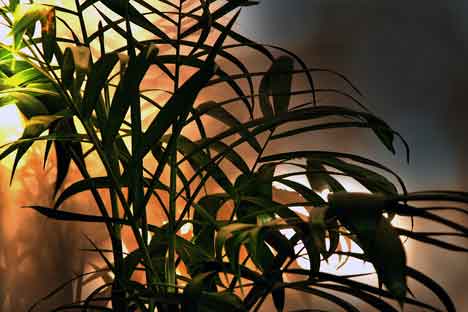
In our efforts to save energy resources, we are increasingly sealing our homes and other buildings off from the outside air. This also means that we are sealing in gases from synthetic materials that we furnish and equip our homes and offices with. As a result, indoor air pollution has become a widespread problem and ranks as one of the top five threats to public health. Yet many people are unaware of this problem, and are inadvertently putting themselves and their families at risk.
What synthetic materials? What gases?
In our modern society, where we expect goods to be more affordable, items that used to be made out of natural materials like solid wood are being replaced with cheaper pressed wood and synthetic materials held together with a variety of glues and resins. These synthetic materials release hundreds of VOCs (volatile organic compounds) into the air. Common household items responsible for chemical emissions include upholstery, curtains, plywood, particleboard, stains and varnishes, paints, paper towels, tissues, carpets, permanent-press clothing, fabrics.
What are the symptoms to watch for?
Symptoms of “sick building syndrome” include allergies, asthma, eye, nose and throat irritations, fatigue, headaches, nervous-system disorders, respiratory congestion and sinus congestion.
What can I do about it?
Prevention is better than cure, and there’s no better way to avoid VOCs in the home than to eliminate them. Fortunately, you won’t have to rebuild, redecorate and refurnish your house to achieve this. You can dramatically influence air quality by using certain plants in your home or office.
Click here to see a list of plants that will purify your environment.
Using these plants will effectively clear the air in your home of most common airborne toxins. To achieve optimal detoxification, you will need to place between 15 and 20 air purifying plants in a home with the area of 1800 square feet (170 sq. metres).
For more information, click here.
Recommended reading: How To Grow Fresh Air by B.C. Wolverton
See you at the garden centre!